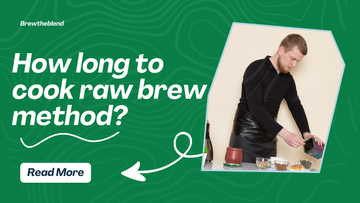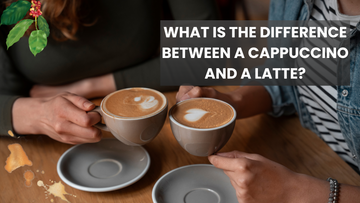How Coffee Packaging Impacts Flavor and Freshness

Coffee is much more than just a morning pick-me-up; it’s a complex beverage that requires careful attention to detail—from the roasting process to how it’s stored and packaged. The importance of coffee packaging can't be overstated, as it directly impacts freshness and flavor.
While most coffee lovers are familiar with the typical coffee package, few realize how much packaging plays a role in preserving the quality of the coffee inside.
The Importance of Coffee Packaging
Coffee packaging serves a critical function beyond simply displaying your favorite coffee brand. It acts as a barrier that preserves the delicate balance of flavors by protecting the coffee from harmful external elements such as oxygen, moisture, light, and heat. These elements can rapidly degrade the quality of your freshly brewed coffee, leading to stale, flat, or overly bitter flavors.
How does packaging affect coffee freshness? Packaging can also influence the coffee's aroma, freshness, and consistency, all contributing to the overall drinking experience.
Key Features of Effective Coffee Packaging

When it comes to coffee packaging, not all bags are created equal. Several key features help preserve the quality of coffee, and understanding these features can help you make better choices when selecting the best coffee bags.
1. One-Way Pressure Valve
One of the most essential features in coffee packaging is the one-way pressure valve. Freshly roasted to-order coffee beans naturally release carbon dioxide (CO2) after roasting, a process known as degassing. If this CO2 is trapped inside a sealed bag, it can cause the bag to puff up and potentially burst. The excess CO2 escapes from the one-way valve while preventing oxygen from entering. This ensures that the coffee remains fresh without compromising its flavor.
2. Interior Lining: Foil vs. Biodegradable
Many traditional coffee bags use a foil lining, which offers high protection from light, moisture, and heat—three main elements that can cause coffee to age quickly. The foil interior also helps maintain a stable temperature, crucial for keeping the coffee fresh longer.
However, with growing concerns about sustainability, biodegradable vs. recyclable coffee packaging options are becoming more popular.
How Different Packaging Affects Coffee Flavor and Freshness

To better understand how packaging affects coffee freshness, let’s examine how different bags perform when tested with freshly roasted coffee.
Standard Foil-Lined Bag
A standard foil-lined bag is one of the most common packaging options in the coffee industry. The robust structure and heat-sealed design make it excellent at preserving coffee freshness.
In a recent test, freshly roasted coffee placed in a foil-lined bag remained flavorful for longer. After 18 days of storage, the coffee retained its bold fruitiness and pleasant acidity, making these freshness bags a favorite among coffee roasters.
Recyclable Coffee Bag
Recyclable bags offer an environmentally friendly alternative to foil-lined bags. They are designed to be fully recyclable, which helps reduce packaging waste. They perform well in maintaining fresh market coffee.
Biodegradable/Compostable Bag
Biodegradable vs. recyclable coffee packaging poses an interesting comparison. In a test with freshly roasted to-order coffee stored in a compostable bag, the coffee exhibited a noticeable decline in flavor. After 18 days, the coffee was flat and lacked the brightness of the other bags, suggesting that compostable bags allow light to accelerate the aging process.
Choosing the Right Coffee Packaging for Flavor and Freshness
The choice of packaging is an essential factor for both consumers and coffee roasters. If you want to preserve your coffee's freshness and full flavor, bags with a one-way valve and a foil interior remain the best packaging for long-term storage. However, if sustainability is a priority, recyclable or biodegradable bags may be the right fit, depending on your needs.
Also Read: Can regular Coffee Be Made in an Espresso Machine?
Conclusion
While traditional foil-lined bags offer excellent protection, sustainable packaging options like recyclable and biodegradable bags are becoming more popular as coffee companies work toward reducing waste. The importance of coffee packaging cannot be ignored, as it plays a significant role in preserving coffee’s quality.
By understanding the nuances of coffee packaging, we can all contribute to a more sustainable coffee industry while enjoying the rich flavors of freshly roasted coffee.
For more information on coffee and its packaging, check out Brew the Blend!
FAQs
1. How is coffee packaged for shipping?
Coffee is typically shipped in airtight, resealable bags with one-way valves, often using foil or recyclable materials to preserve freshness and prevent oxidation.
2. How long does packaged coffee last?
Unopened packaged coffee can last 6-12 months. Once opened, it's best enjoyed within 2-4 weeks to maintain optimal flavor, aroma, and freshness.
3. Why is coffee packaging important?
Coffee packaging protects freshness by shielding beans from air, light, and moisture, ensuring quality and extending shelf life for a better drinking experience.
4. What affects the freshness of coffee?
Freshness depends on exposure to air, heat, light, and humidity. Airtight packaging helps maintain flavor and aroma by limiting exposure to these elements.
5. Do coffee bags keep coffee fresh?
Yes, high-quality coffee bags with one-way valves keep coffee fresh. The valves allow CO2 to escape while blocking oxygen and moisture from entering the bag.
6. Which packaging is better for preserving the quality of roasted coffee beans and why?
Foil-lined bags with one-way valves are best for preserving roasted beans. They block light, moisture, and air, thus maintaining flavor and aroma longer.





